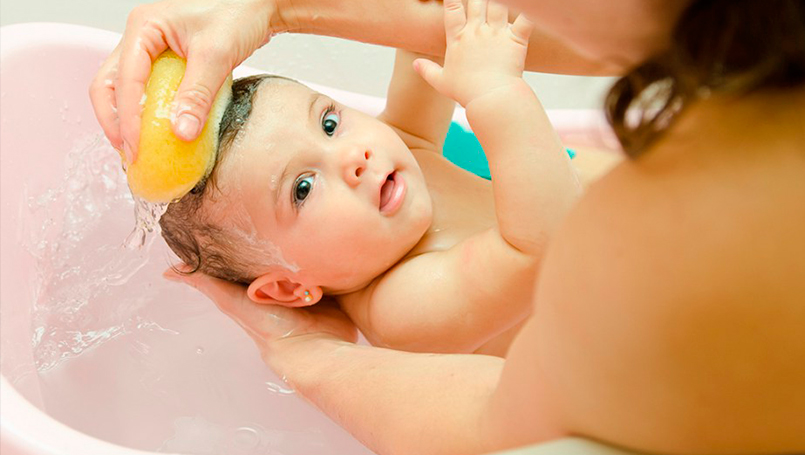Welcoming a newborn into the world is a magical experience, filled with joy, wonder, and a touch of uncertainty. Among the myriad of new tasks that come with caring for your little one, giving your baby their first sponge bath can feel like both a rite of passage and a daunting challenge. It’s a delicate endeavor that requires a gentle touch, a calm environment, and a bit of guidance.
In this step-by-step guide, we will equip you with the knowledge and confidence to safely navigate the art of sponge bathing your newborn, transforming this essential routine into a bonding experience that nourishes not only their hygiene but also your parental instincts. So, gather your supplies, take a deep breath, and let’s embark on this soothing journey together.
Understanding the Essentials of Newborn Sponge Bathing

When it comes to bathing your newborn, a sponge bath is a gentle and effective method to keep your baby clean without the need for a full immersion in water. Newborns, particularly in their first few weeks, have not yet fully developed their body temperature regulation and are often susceptible to getting too cold. Thus, ensuring the environment is warm and safe is crucial. Gather all the items you need beforehand, which include:
-
- Soft washcloths – Choose gentle materials to avoid irritating your baby’s sensitive skin.
-
- Basin of warm water - Ensure the water is lukewarm to prevent burns or chills.
-
- Baby soap – If necessary, use a mild, fragrance-free option.
-
- Towels - Have a warm, soft towel ready to wrap your baby after the bath.
-
- Diapers and clothing – Keep these nearby for a quick change post-bath.
Once you have everything ready, lay your baby on a safe, flat surface covered with a soft towel. Begin by wetting the washcloth and gently wiping the areas with dirt or milk residue, such as the face, neck, hands, and diaper area. It’s advisable to clean from top to bottom to maintain hygiene. Use another clean washcloth to rinse off any soap, if applied. Be attentive to wrinkles and folds in the skin, as these can trap moisture and lead to irritation. After the bath, gently pat your baby dry, apply any necessary moisturizers, and dress them promptly to keep them cozy and warm.
Gathering Your Supplies for a Smooth Bathing Experience
To ensure a calm and organized sponge bathing experience for your newborn, it’s essential to gather all necessary supplies beforehand. This preparation not only alleviates stress but also facilitates a smoother process. Here is what you’ll need:
-
- Soft washcloths: Choose gentle, hypoallergenic fabrics.
-
- Warm water: Fill a basin with comfortably warm water.
-
- Baby shampoo: Select a tear-free, mild formula.
-
- Moisturizer: Use a baby-safe lotion for post-bath hydration.
-
- Fresh diaper and clothing: Have these ready for after the bath.
Additionally, creating a cozy bathing station can enhance the experience for both you and your little one. Here are some tips for setting up:
-
- Choose a warm room: Make sure the bathing area is draft-free.
-
- Prepare a soft surface: Use a changing mat or a soft towel for comfort.
-
- Keep everything within reach: Arrange supplies so you don’t have to leave the baby unattended.
-
- Have a warm towel nearby: This keeps your baby warm post-bath.
Mastering the Technique: Step-by-Step Instructions for Success
To begin, gather all the supplies you will need for the sponge bath. This preparation ensures that you have everything at hand, keeping your baby safe and comfortable. Consider the following essentials:
-
- Soft washcloths: for gentle cleaning
-
- Baby soap: specifically formulated for newborn skin
-
- Warm water: preferably in a shallow basin
-
- Towels: to dry your baby off afterward
-
- Comfortable space: to lay your baby safely during the bath
Once you have your materials ready, it’s time to create a soothing environment. Start by undressing your baby and wrapping them in a warm towel to keep them cozy. Next, dip a soft washcloth into the warm water mixed with a few drops of baby soap, gently wiping your baby’s face, and moving down towards the rest of their body—paying close attention to the folds of their skin. Keep your motions light and calming; if your baby seems uncomfortable at any point, take a moment to reassure them with your voice or a gentle touch.
| Body Part | Cleaning Technique |
|---|---|
| Face | Wipe gently with a damp washcloth, no soap needed. |
| Neck | Carefully clean under the folds with a small amount of soapy water. |
| Arms & Legs | Use long strokes, rinsing the washcloth frequently. |
| Diaper Area | Use a clean spot on the washcloth or a new one; rinse well. |
Ensuring Comfort and Safety: Tips for a Positive Bath Time
To create a soothing experience for your newborn during bath time, it’s essential to prepare the environment beforehand. Make sure the room is warm, ideally around 75°F to 80°F, to prevent your baby from becoming too cold. Gather all the necessities—soft towels, a clean sponge, and baby soap—within reach to ensure you can focus entirely on your little one without the need to leave them unattended. Using a non-slip surface beneath the sponge bath will not only provide comfort but will also minimize the risk of accidental slips.
While bathing, maintain a calm and gentle demeanor to enhance your baby’s overall experience. Speak softly, and engage them with soothing touches or playful sounds. Consider following these simple tips for added comfort and safety:
-
- Support Their Head: Always keep one hand on your baby’s head to provide stability.
-
- Use Lukewarm Water: Test the water temperature with your wrist or elbow to ensure it’s comfortable.
-
- Limit Bath Duration: Keep bath time to about 5-10 minutes to prevent overheating and discomfort.
-
- Wrap in a Towel: After the bath, gently wrap your baby in a warm towel to maintain their body temperature.
Q&A
Q&A: How to Sponge Bath a Newborn – A Step-by-Step Guide
Q: Why is a sponge bath recommended for newborns instead of a traditional bath?
A: Newborns have delicate skin and their umbilical cord stump needs special care until it falls off. A sponge bath helps to keep them clean without submerging them in water, which can prevent irritation and reduce the risk of infection.
Q: When can I start giving my newborn a sponge bath?
A: You can start giving sponge baths immediately after birth. They are especially recommended until the umbilical cord stump falls off and heals completely, usually within the first few weeks of life.
Q: What supplies do I need for a sponge bath?
A: Gather the following items: a soft washcloth, mild baby soap, warm water in a shallow basin, a towel for drying, a clean diaper, and a soft blanket for comfort. It’s also helpful to have a special spot set up where you can comfortably bathe and cuddle your newborn.
Q: How do I prepare my baby for a sponge bath?
A: First, ensure your baby’s room is warm and cozy. Undress your newborn but keep them wrapped in a towel except for the areas you’re washing. Swaddle them securely to help them feel safe and comfortable during the bath.
Q: What is the step-by-step process for giving a sponge bath?
A:
-
- Start with the Face: Use a damp washcloth to gently wipe your baby’s face with plain water, avoiding soap here.
-
- Clean the Body: Dip the washcloth in warm, soapy water. Starting from the neck down, wash your baby’s arms, legs, and torso while supporting their body. Rinse the cloth regularly to remove soap residue.
-
- Pay Attention to Folds: Be sure to wash in between the toes, fingers, and any skin folds to prevent irritation.
-
- Focus on Genital Area: Use a clean section of the washcloth to gently clean the diaper area, always wiping from front to back.
-
- Finish with the Head: Use a damp washcloth to softly clean your baby’s head, being cautious around the fontanelle (soft spot). No soap is needed here.
-
- Dry and Dress: Gently pat your newborn dry with a soft towel, taking extra care around the umbilical cord stump. Dress them in a clean diaper and outfit.
Q: How often should I sponge bathe my newborn?
A: Sponge bathing can be done every few days or as needed. Too frequent washing can dry out their sensitive skin. Simply spot-clean with a damp washcloth in between baths if needed.
Q: What should I do if my newborn seems upset during the sponge bath?
A: It’s normal for babies to fuss during baths, but you can help calm them by speaking softly, maintaining eye contact, and using gentle, rhythmic movements. Ensure they are warm and swaddled when taking them out of the water to provide additional comfort.
Q: Can I use baby lotion after the sponge bath?
A: Yes, after your baby is completely dry, you can apply a gentle, hypoallergenic baby lotion to keep their skin moisturized. Always check with your pediatrician for specific recommendations before introducing new products.
Q: What if my baby has dry skin or a rash?
A: If you notice dry patches or a rash, consult your pediatrician before applying any products. They can guide you on the best lotions or ointments suited for your baby’s sensitive skin.
Q: How can I make sponge baths enjoyable for both of us?
A: Create a soothing environment with soft music or a lullaby, maintain gentle touch throughout the bath, and always talk or sing to your baby. This not only helps them feel secure but also strengthens the bond between you.
Getting the hang of sponge bathing may take some practice, but soon you and your little one will have a smooth routine. Happy bathing!
To Wrap It Up
As we conclude this guide on how to sponge bath your newborn, remember that this intimate ritual is not just about cleanliness, but also about building a soothing connection with your little one. Each gentle stroke helps nurture their delicate skin while allowing you both to bond in a calm and loving atmosphere. While it may feel daunting at first, with practice and patience, you’ll soon find your rhythm. Every bath is an opportunity to embrace those tender moments that will linger in your memory long after the water has dried. So gather your supplies, set the stage for comfort, and let the warmth of these fleeting moments wash over you and your newborn. Happy bathing!

